Milk for mother
Breast milk composition | What’s in your breast milk?
It’s full of nutrients that feed and protect your baby, but did you know breast milk composition varies over time? Find out what’s in breast milk and how it changes to meet your baby’s needs
Share this content
As your baby’s first food, you might expect your breast milk ingredients to include basic essential nutrients, such as carbohydrates, proteins and fats, as well as water to keep her hydrated, which it does.1 But breast milk is no ordinary food – it has more value than nutrition alone.
What’s breast milk made of?
Here are some of the other constituents of human milk present at every feed, many of which can’t be replicated:
- Millions of live cells. These include immune-boosting white blood cells, as well as stem cells, which may help organs develop and heal.
2
- More than 1,000 proteins3 that help your baby grow and develop, activate her immune system, and develop and protect neurons in her brain.
- All that breast milk protein is made up of amino acids. There are more than 20 of these compounds in your milk. Some of them, called nucleotides, increase at night and scientists think they may induce sleep.4,5
- Over 200 complex sugars called oligosaccharides6 that act as prebiotics, feeding ‘good bacteria’ in your baby’s gut. They also prevent infections entering her bloodstream and lower her risk of brain inflammation.
- More than 40 enzymes.7 Enzymes are catalysts that speed up chemical reactions in the body. The ones in your milk have jobs such as aiding your baby’s digestion and immune system, as well as helping her absorb iron.
- Growth factors that support healthy development.
 1 These affect many parts of your baby’s body, including her intestines, blood vessels, nervous system, and her glands, which secrete hormones.
1 These affect many parts of your baby’s body, including her intestines, blood vessels, nervous system, and her glands, which secrete hormones. - On the subject of hormones, your breast milk contains lots of them!7 These clever chemicals send messages between tissues and organs to ensure they work properly. Some help regulate your baby’s appetite and sleep patterns, and even aid the bond between you.
- Vitamins and minerals – nutrients that support healthy growth and organ function, as well as help build your baby’s teeth and bones.1
- Antibodies, also known as immunoglobulins. There are five basic forms of antibodies and all of them can be found in your milk.8 They protect your baby against illnesses and infections by neutralising bacteria and viruses.
- You may have heard of long-chain fatty acids because they play a pivotal part in building your baby’s nervous system, as well as aid healthy brain and eye development.
 9 And, you’ve guessed it, there are several of these in your milk too!
9 And, you’ve guessed it, there are several of these in your milk too! - 1,400 microRNAs, which are thought to regulate gene expression, as well as help prevent or halt disease development, support your baby’s immune system, and play a role in remodelling the breast.10
While this is a long list, it’s only some of the ingredients in your breast milk – and scientists are still discovering more. Remarkably, the levels of these ingredients can fluctuate over time, depending on your baby’s age and needs.
Let’s start at the beginning…
The first few days: Colostrum
The early milk your breasts produce after your baby’s birth is called colostrum. This thick, sticky breast milk is often called ‘liquid gold’, not just because of its yellow or orangey colour, but because it’s so important for nourishing and protecting your vulnerable newborn.
At first you’ll produce very small amounts – just 40 to 50 ml (1.4 to 1. 8 fl oz) over 24 hours11 – but as your baby’s stomach is only the size of a marble, that’s all she needs. Colostrum is also very easy to digest. And what it lacks in quantity it makes up for in quality.
8 fl oz) over 24 hours11 – but as your baby’s stomach is only the size of a marble, that’s all she needs. Colostrum is also very easy to digest. And what it lacks in quantity it makes up for in quality.
The composition of colostrum
Colostrum has the same ingredients that your later milk will have – it’s just that the amounts of these ingredients are different, as it’s tailored to your newborn’s needs.
For example, colostrum is sometimes referred to as a natural vaccination because its levels of antibodies and white blood cells are so high. Your first milk needs to contain these so it can protect your baby from infections and diseases after she leaves the safety of your womb.
Colostrum’s protective qualities are also important for your baby’s digestive system. Babies are born with a permeable gut lining, which colostrum coats and seals.12,13 This is particularly important if your baby is premature, as she’ll be more at risk from the dangerous gut condition necrotising enterocolitis (NEC). 13
13
It’s also rich in minerals and vitamins, with higher concentrations of vitamins A, E and K than mature breast milk. The percentage of protein in colostrum is higher too.1 Colostrum also acts like a laxative that helps your baby pass her first poo, meconium.14
The next couple of weeks: Transitional milk
During the first week of your baby’s life, around two to four days after delivery, your breast milk changes in quantity. You may feel your breasts become fuller and firmer – a change known as your milk ‘coming in’. On the third day, your baby will consume 300 to 400 ml (10.5 to 14 fl oz) of breast milk per 24 hours, and by the fifth day this increases to 500 to 800 ml (18 to 28 fl oz), so it’s not surprising your breasts may feel bigger!11
From day five to 14, your milk is called transitional milk.15 As the name suggests, it’s changing from colostrum to mature milk. It becomes creamier in colour and texture, and also higher in fat, calories and lactose (a natural sugar), making it the ideal food for your rapidly growing newborn.
But rest assured it’s still full of protective antibodies, live cells, ‘good’ bacteria and other bioactive ingredients to help keep her healthy.15
Four weeks onwards: Mature milk
By the time your baby is four weeks old, your breast milk will be fully mature. It’s rich in protein, sugar, vitamins and minerals, plus numerous bioactive components – such as hormones, growth factors, enzymes and live cells – to support your baby’s healthy growth and development.7
From four weeks, the nutritional content and levels of ingredients in mature milk generally remain fairly consistent. But the composition of your breast milk can still change from day to day and feed to feed.
For example, if you or your baby are ill, your body will make antibodies to fight that particular illness, which become part of your milk. And, remarkably, as your baby begins exploring the world and putting toys in her mouth, the level of protective bacteria-fighting enzymes in your milk rises. 16 This variation in breast milk composition shows how it adapts to your baby’s changing needs.
16 This variation in breast milk composition shows how it adapts to your baby’s changing needs.
What are foremilk and hindmilk?
You may notice your milk seems thicker and creamier towards the end of a feed. This is because, as the feed progresses, the fat composition gradually increases due to the mechanics of milk moving through the breast. It’s often referred to as hindmilk, while the first more ‘watery’ milk is known as foremilk. These two names might lead you to think there’s a switch where foremilk becomes hindmilk, but there isn’t. The change is a gradual process.15 Both are essential parts of a completed feed, and rich in vitamins, minerals, protein and sugars.
Your milk’s fat content relates to how drained your breast is. Your breasts will be fuller at the start of some feeds (milk lower in fat) and more drained at the start of other feeds (milk higher in fat). So don’t worry too much about foremilk and hindmilk – over 24 hours your baby will end up consuming a similar amount of fat in total each day. 17
17
Breast milk composition after six months
You may be wondering what happens to your milk if you continue breastfeeding long-term. Can your body really keep producing such high-quality mature milk for months and months, or even years? The answer is, don’t underestimate your breasts!
While it’s true you’ll need to start introducing solids at six months to bolster your baby’s stores of certain nutrients, such as iron,18 your milk will still make up a large part of her diet.
For example, when your baby is seven months old she will still be getting 93% of her calories from breast milk. Even between 11 and 16 months, around half of her daily calorie intake will be from milk.19
So relax in the knowledge that you can both continue to enjoy the benefits of breastfeeding for many months to come.
References
1 Ballard O, Morrow AL. Human milk composition: nutrients and bioactive factors. Pediatr Clin North Am. 2013;60(1):49-74.
2 Hassiotou F et al. Cells in human milk: state of the science. J Human Lact. 2013;29(2):171-182.
3 Beck KL, et al. Comparative proteomics of human and macaque milk reveals species-specific nutrition during postnatal development. J Proteome Res. 2015;14(5):2143-2157.
4 Zhang Z et al. Amino acid profiles in term and preterm human milk through lactation: a systematic review. Nutrients. 2013;5(12):4800-4821.
5 Sánchez CL et al. The possible role of human milk nucleotides as sleep inducers. Nutr Neurosci. 2009;12(1):2-8.
6 Moukarzel S, Bode L. Human milk oligosaccharides and the preterm infant: a journey in sickness and in health. Clin perinatol. 2017;44(1):193-207.
7 Hamosh M. Bioactive factors in human milk. Pediatric Clinics. 2001;48(1):69-86.
8 Brandtzaeg P. The mucosal immune system and its integration with the mammary glands. The J Pediatr. 2010;156(2):S8-15.
9 Uauy R et al. Essential fatty acids in early life: structural and functional role. Proc Nutr Soc. 2000;59(1):3-15.
Proc Nutr Soc. 2000;59(1):3-15.
10 Alsaweed M et al. Human milk cells and lipids conserve numerous known and novel miRNAs, some of which are differentially expressed during lactation. PLoS One. 2016;11(4):e0152610.
11 Neville MC et al. Studies in human lactation: milk volumes in lactating women during the onset of lactation and full lactation. Am J Clin Nutr. 1988;48(6):1375-1386.
12 Marchbank T et al. Pancreatic secretory trypsin inhibitor is a major motogenic and protective factor in human breast milk. Am J Physiol Gastrointest Liver Physiol. 2009;296(4):G697-703.
13 Herrmann K, Carroll K. An exclusively human milk diet reduces necrotizing enterocolitis. Breast Med. 2014;9(4):184-190.
14 Lawrence RA, Lawrence RM. Breastfeeding: A guide for the medical profession; 2011. 1114 p.
15 Martin CR et al. Review of infant feeding: key features of breast milk and infant formula. Nutrients. 2016;8(5):279.
16 Montagne P et al. Changes in lactoferrin and lysozyme levels in human milk during the first twelve weeks of lactation.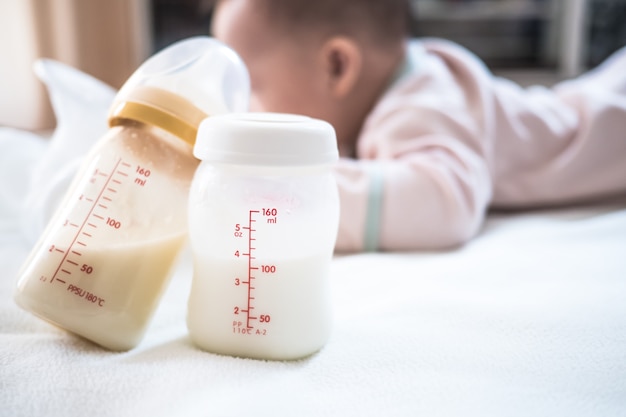 InBioactive components of human milk 2001 (pp. 241-247). Springer, Boston, MA.
InBioactive components of human milk 2001 (pp. 241-247). Springer, Boston, MA.
17 Kent JC, et al. Volume and frequency of breastfeedings and fat content of breast milk throughout the day. Pediatrics. 2006;117(3):e387-395.
18 Kuo AA et al. Introduction of solid food to young infants. Matern child health J. 2011;15(8):1185-1194.
19 Dewey KG et al. Breast milk volume and composition during late lactation (7-20 months). J Pediatr Gastroenterol Nutr. 1984;3(5):713-720.
How to increase breast milk supply
How to increase breast milk supply | Pregnancy Birth and Baby beginning of content6-minute read
Listen
The best way to establish a healthy supply of breast milk is to start early, breastfeed frequently and make sure your baby is latching on correctly.
Some women have low supply, particularly during the early weeks of breastfeeding. This is the main reason some mothers start weaning or move to formula feeding. However, it's rare for a mother to produce less milk than her baby needs.
What are some reasons for a low supply?
There are many different reasons why some women have low supply including:
- delays in breastfeeding after delivery or separations of mother and baby such as if the baby needs to be admitted to the special care nursery or if the mother is unwell after delivery
- poor attachment to the breast, which can be caused by flat or inverted nipples, a tongue or lip tie, a sleepy baby because of jaundice, or a difficult or prolonged delivery
- if the mother is unwell due to problems like mastitis, retained placental tissue or large blood loss after the baby is born
- scheduled or timed feeding, rather than feeding baby on demand
- taking an oral contraceptive pill that contains oestrogen
- formula feeding as well as breastfeeding
- skipping breast feeds and offering a supplement formula feed but not expressing breast milk at that time to ensure that supply continues to meet baby's demand
- long-term use of dummies or nipple shields
- smoking
Breast milk supply can be low if the woman has medical problems such as polycystic ovarian syndrome, hypothyroidism, diabetes and pre-diabetes, or takes some blood pressure medications and cold and flu preparations, or has taken the contraceptive pill or has been infertile.
In some women, breast or nipple surgery makes breastfeeding difficult. In a few women, the breasts did not change during puberty and early pregnancy in a way that makes breastfeeding easier.
Typical baby behaviour
Some health professionals and mothers have an unrealistic expectation of how the baby will behave and might be concerned that what is normal baby behaviour could indicate low supply.
If your baby is having a good number of wet nappies each day, low supply is not a likely cause.
Some issues with breastfeeding include:
- wanting to be fed often — breast milk is digested in about 1.5 to 2 hours, whereas formula takes longer to digest
- being more fussy in the evening; you might produce less milk at this time and your baby will request fewer feeds or will 'cluster feed' (feed frequently at certain times of the day)
- liking to suck even if they have had a good breastfeed — sucking comforts them
- wanting lots of cuddles and skin to skin contact — this makes them feel secure and ensures that baby's needs are being met
- wanting to feed more frequently, which will happen when a baby is having a growth spurt — increased feeding will increase your supply
- reduced amount of sucking time at the breast — this often happens after 2 or 3 months as your baby becomes more efficient at the breast
What is normal for mum?
Although breastfeeding is different for every woman, the following do not mean that you have a low supply:
- your breasts suddenly seem softer — this is normal as your milk supply adjusts to your baby's needs
- your breasts do not leak milk, stop leaking or only leak a little
- you don’t feel a 'let-down' when milk pushes out of the breast
- you are unable to pump very much with an electric pump — remember the baby is much more efficient and will always get more than a pump
- how much you pump decreases over time
How do I know that baby is getting enough milk?
Always look at the whole picture to ensure that baby's growth and development is with normal limits.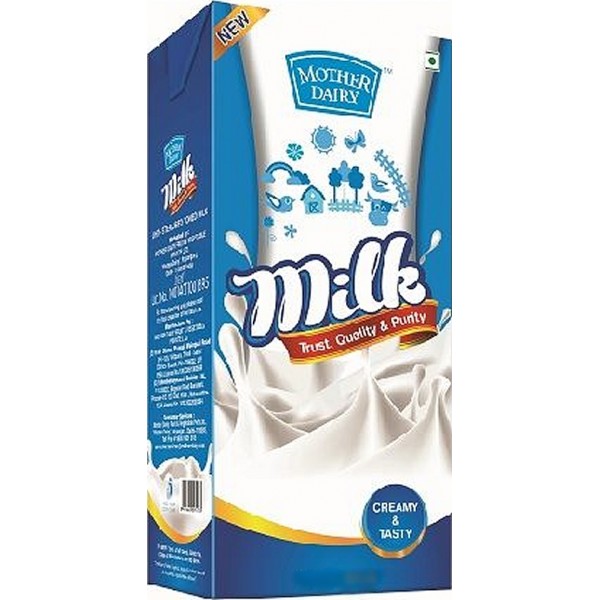 The baby is getting enough milk if they:
The baby is getting enough milk if they:
- go through 6 to 8 wet nappies in a 24-hour period including at least a few dirty nappies
- wake for feeds by themselves and feed vigorously at the breast
- have 8 to 12 breastfeeds in 24 hours
- pass a soft yellow stool
- settle and sleep fairly well after most feeds
- is back to birth weight in about 2 weeks
- gain on average 150g or more every week for the first 3 months
If your supply is low
Milk supply is considered to be low if you are not producing enough milk to meet your baby's normal growth and development needs.
Low milk supply is usually a temporary situation that will improve with appropriate breastfeeding support and management. Making more milk is all about supply and demand — the more milk is removed from the breast, the more milk is made. The less milk removed, the less made.
How to increase your supply
The following may help increase your breastmilk supply:
- ensure that baby is attaching well and removing milk efficiently from the breast
- be prepared to feed your baby more frequently — breastfeed on demand every 2-3 hours at least 8 times in 24 hours
- switch your baby from one breast to the other; offer each breast twice
- ensure your breasts are emptied well at each feed or pumping session; you can express after breastfeeds to make sure
- do not go longer than 5 hours without milk removal — your baby at the breast sucking is the most effective way to do this, but otherwise use a hand or electric pump
- when your baby is feeding, compress your breast to aid milk flow as this will also encourage more effective sucking
- make sure you are drinking a lot of water, eating a healthy balanced diet and not missing any meals
- also ensure you are resting as much as possible between feeds
Other options that can help with a low supply include:
- a supplemental nursing system or 'supply line'
- herbal and pharmacological remedies that are known to increase milk supply (galactogogues)
Some cultures use food or herbs to increase breast milk supply but many of these have not been formally studied. Domperidone is a prescription medicine that can increase the hormone prolactin, which can help stimulate breast milk production. Your doctor may discuss if this medicine is right for you. The main way to increase breast milk supply is through breastfeeding or expressing milk more than you currently do.
Domperidone is a prescription medicine that can increase the hormone prolactin, which can help stimulate breast milk production. Your doctor may discuss if this medicine is right for you. The main way to increase breast milk supply is through breastfeeding or expressing milk more than you currently do.
If you think you have low milk supply, talk to your doctor, lactation consultant, breastfeeding counsellor or child health nurse. You can call Pregnancy Birth and Baby on 1800 882 436 for advice and support.
Sources:
Australian Breastfeeding Association (Increasing supply), Karitane (Breastfeeding), Royal Women's Hospital (Low milk supply)Learn more here about the development and quality assurance of healthdirect content.
Last reviewed: October 2021
Back To Top
Related pages
- Sore, cracked or bleeding nipples
- Breastfeeding your baby
Need further advice or guidance from our maternal child health nurses?
1800 882 436
Video call
- Contact us
- About us
- A-Z topics
- Symptom Checker
- Service Finder
- Linking to us
- Information partners
- Terms of use
- Privacy
Pregnancy, Birth and Baby is funded by the Australian Government and operated by Healthdirect Australia.
Pregnancy, Birth and Baby is provided on behalf of the Department of Health
Pregnancy, Birth and Baby’s information and advice are developed and managed within a rigorous clinical governance framework. This website is certified by the Health On The Net (HON) foundation, the standard for trustworthy health information.
This site is protected by reCAPTCHA and the Google Privacy Policy and Terms of Service apply.
This information is for your general information and use only and is not intended to be used as medical advice and should not be used to diagnose, treat, cure or prevent any medical condition, nor should it be used for therapeutic purposes.
The information is not a substitute for independent professional advice and should not be used as an alternative to professional health care. If you have a particular medical problem, please consult a healthcare professional.
Except as permitted under the Copyright Act 1968, this publication or any part of it may not be reproduced, altered, adapted, stored and/or distributed in any form or by any means without the prior written permission of Healthdirect Australia.
Support this browser is being discontinued for Pregnancy, Birth and Baby
Support for this browser is being discontinued for this site
- Internet Explorer 11 and lower
We currently support Microsoft Edge, Chrome, Firefox and Safari. For more information, please visit the links below:
- Chrome by Google
- Firefox by Mozilla
- Microsoft Edge
- Safari by Apple
You are welcome to continue browsing this site with this browser. Some features, tools or interaction may not work correctly.
Composition of breast milk | What is breast milk made of?
Breast milk is rich in nutrients that nourish and protect your baby. But did you know that its composition changes over time? Find out what breast milk is made of and how it adapts to your baby's needs.
Share this information
Breast milk is a baby's very first food, so of course
contains essential nutrients - carbohydrates, proteins, fats, and water to maintain water balance in the body. 1 All this is true. But mother's milk is not just a food product, and it performs not only nutritional functions.
1 All this is true. But mother's milk is not just a food product, and it performs not only nutritional functions.
What is breast milk made of?
Each serving of breast milk contains many other ingredients, many of which are unique.
- Millions living cells. These include white blood cells, which are responsible for strengthening the immune system, and stem cells, which promote the growth and repair of organs. 2
- More than 1000 3 proteins that help your baby's body grow and develop, strengthen his immune system, form and protect brain neurons.
- All proteins in breast milk consist of amino acids . There are more than 20 types of them in milk, and they also include nucleotides, the content of which rises at night. Scientists suggest that they can have a hypnotic effect. 4.5
- More than 200 complex sugars - oligosaccharides 6 that act as prebiotics necessary to maintain a healthy microflora in the intestines of the child.
 In addition, they prevent infections from entering the bloodstream and reduce the risk of brain inflammation.
In addition, they prevent infections from entering the bloodstream and reduce the risk of brain inflammation. - More than 40 enzymes 7 . Enzymes serve as catalysts for chemical reactions in the body. Breast milk enzymes stimulate digestion and immunity, and help the baby's body absorb iron.
- Growth factors contributing to the normal development of the body. 1 They affect the state of many organs and systems, including internal organs, blood vessels, nervous system and glands responsible for the production of hormones.
- By the way, there are a lot of hormones in breast milk! 7 These smart chemicals are responsible for the exchange of information between tissues and organs, ensuring their normal functioning. Some hormones control appetite, others sleep, and some are even responsible for strengthening the bond between mom and baby.
- Vitamins & Minerals - Nutrients that support normal growth and function of organs and the formation of teeth and bones.
 1
1 - Antibodies or immunoglobulins. There are five main types of antibodies, and all of them are present in breast milk. 8 Antibodies neutralize bacteria and viruses, protecting the child's body from infections and diseases.
- You may have heard of long chain fatty acids , which play a key role in the formation of the child's nervous system and the development of the brain and eyes. 9 So, they are also present in breast milk!
- 1400 species miRNA . It is believed that they control gene expression, prevent and stop the development of diseases, support the immune system of the child, and also affect the change in the structure of the mother's breast. 10
This long list includes only a subset of the ingredients in breast milk—and scientists are discovering new substances in the meantime. Interestingly, the content of these ingredients varies depending on the age and needs of the child.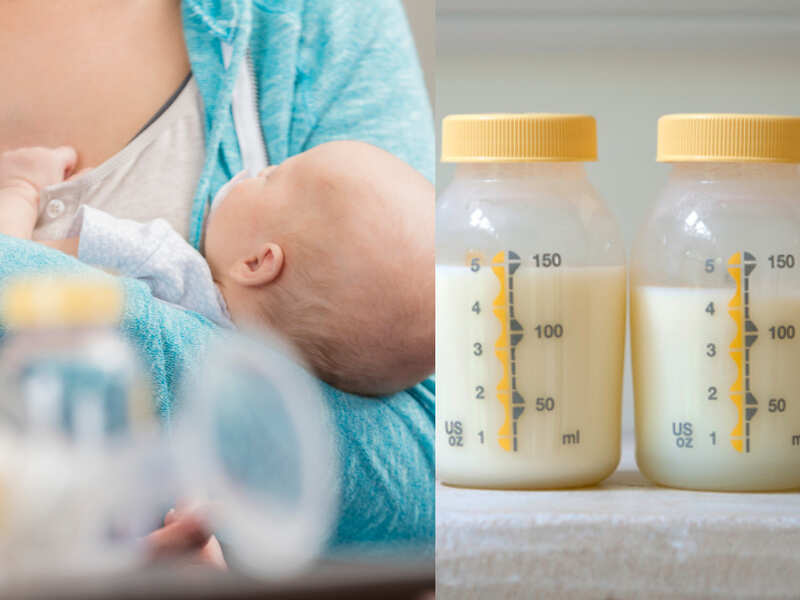
Let's start from the beginning...
In the early days: colostrum
The first milk that is produced immediately after the birth of a baby is called colostrum. This thick, sticky liquid is often referred to as "liquid gold," and not just for its yellow or orange color. Colostrum performs an important function of nourishing and protecting the fragile body of a newborn baby.
Very little milk is produced at first - only 40-50 ml per day 11 . But the stomach of a newborn is very tiny, so this is quite enough. In addition, colostrum is very well digested. And the small volume is more than offset by its high-quality composition.
Composition of colostrum
Colostrum contains the same substances as breast milk in the following weeks, but in a different ratio, according to the needs of the newborn.
Colostrum, for example, is sometimes called nature's vaccine for its high levels of antibodies and white blood cells. After the child leaves safe mother's womb, the first milk helps to protect it from infections and diseases.
In addition, the protective properties of colostrum play an important role in strengthening the baby's digestive system. Colostrum protects and strengthens the mucosa of the gastrointestinal tract, which is highly permeable in newborns. 12.13 This is especially important if the baby is born prematurely, as this increases the risk of necrotizing enterocolitis. 13
In addition, colostrum is rich in minerals and vitamins, and contains more vitamins A, E and K than in mature breast milk. The protein content is also increased. 1 Colostrum also has a laxative effect, helping to eliminate meconium (original feces). 14
In the next few weeks: transitional milk
During the first week of a baby's life, about two to four days after birth, breast milk production increases. The breast becomes larger and firmer - milk begins to "come". On the third day, the baby consumes 300-400 ml of breast milk per day, and by the fifth day - already 500-800 ml. No wonder breasts seem bigger!
No wonder breasts seem bigger!
Milk produced from days 5 to 14 is called transitional milk. 15 As the name suggests, this period is the transition from colostrum to mature breast milk. It becomes thicker and lighter, the content of fat and lactose (natural sugar) increases in it, and the calorie content increases. All this makes transitional milk an ideal food for the rapidly growing body of a newborn.
But despite the change in structure, transitional milk still contains a large amount of antibodies, living cells, beneficial bacteria and other biologically active substances necessary for the health of the child. 15
After four weeks: mature milk
By the time the baby is four weeks old, breast milk
has reached full maturity. It is rich in proteins, sugar, vitamins and minerals, as well as all kinds of biologically active components - hormones, growth factors, enzymes and living cells. All this ensures healthy growth and development of the child.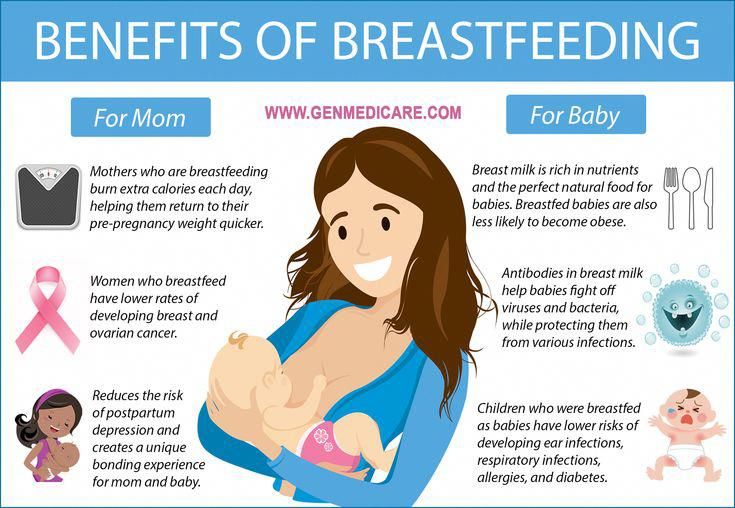 7
7
After four weeks, the nutritional content and ingredient ratios of mature milk are generally fairly stable. However, the composition of milk at different times and in different feedings can still vary.
For example, if a mother or child is sick, the mother's body produces antibodies to the causative agents of this disease, and these antibodies pass into breast milk. And when the baby begins to explore the world and taste toys, the content of protective antibacterial enzymes in breast milk increases. 16 In other words, the composition of breast milk is adapted to the needs of the baby.
What is foremilk and hindmilk?
You may have noticed that milk becomes thicker towards the end of a feed. The fact is that as you feed, the fat content of milk gradually increases. This is due to the mechanical features of the movement of milk in the breast. The thick milk coming at the end of a feed is often referred to as "hind" milk, while the thinner milk at the beginning of a feed is often referred to as "fore". You might think that the transition from "front" milk to "back" occurs at some specific moment, but this is not so - the change in consistency occurs gradually. 15 Both types of milk are essential for a full serving and both are rich in vitamins, minerals, protein and sugar.
You might think that the transition from "front" milk to "back" occurs at some specific moment, but this is not so - the change in consistency occurs gradually. 15 Both types of milk are essential for a full serving and both are rich in vitamins, minerals, protein and sugar.
The fat content of milk depends on how full the breast is. At the beginning of feeding, the breasts can be filled more (and then the milk will be less fat) or less (and then the milk will be more fat). But do not worry about the amount of "forward" and "hind" milk - in general, every day the baby receives approximately the same amount of fat. 17
Composition of breast milk after six months
You may be wondering what will happen to milk during
prolonged breastfeeding. Will the body be able to produce high quality mature milk for months or even years? Answer: do not underestimate the possibilities of the mother's breast!
Although it is indeed time to start solid foods at six months of age to replenish the baby's stores of certain nutrients, such as iron, 18 breast milk still plays a big role in his diet.
For example, at the age of seven months, a baby still receives 93% of its calories from breast milk. And even between 11 and 16 months, mother's milk provides the baby with about half of the daily calorie intake. 19
So rest easy, breastfeeding will benefit you and your baby for many months.
Literature
1 Ballard O, Morrow AL. Human milk composition: nutrients and bioactive factors. Pediatric Clin North Am. 2013;60(1):49-74. Ballard O., Morrow AL, "Composition of breast milk: nutrients and biologically active factors". Pediatrician Clean North Am. 2013;60(1):49-74.
2 Hassiotou F et al. Cells in human milk: state of the science. J Human Lact . 2013;29(2):171-182. — Hassiot F. et al., "Breast Milk Cells: What the Science Knows." J Human Lact (Journal of the International Association of Lactation Consultants) . 2013;29(2):171-182.
2013;29(2):171-182.
3 Beck KL Comparative proteomics of human and macaque milk reveals species-specific nutrition during postnatal development. J Proteome Res . 2015;14(5):2143-2157. - Beck K.L. et al., "Comparative proteomics of human and macaque milk demonstrates species-specific nutrition during postnatal development." G Proteom Res. 2015;14(5):2143-2157.
4 Zhang Z et al. Amino acid profiles in term and preterm human milk through lactation: a systematic review. Nutrients. 2013;5(12):4800-4821. - Amino acid profile of milk after term and preterm birth: a systematic review. Nutrients. 2013;5(12):4800-4821.
5 Sánchez CL et al. The possible role of human milk nucleotides as sleep inducers. Nutr Neurosci. 2009;12(1):2-8. - Sanchez S.L. et al., "Nucleotides in breast milk may help the baby fall asleep. " Nutr Neurosai. 2009;12(1):2-8.
" Nutr Neurosai. 2009;12(1):2-8.
6 Moukarzel S, Bode L. Human milk oligosaccharides and the preterm infant: a journey in sickness and in health. Clin perinatol. 2017;44(1):193-207. - Mukarzel S., Bode L., "Breast milk oligosaccharides and the full-term baby: a path to illness and health." Klin Perinatol (Clinical perinatology). 2017;44(1):19 8-15. - Brandtzeg P., "The mucosal immune system and its integration with the mammary glands". J Pediatrician (Journal of Pediatrics). 2010;156(2):S8-15.
9 Uauy R et al. Essential fatty acids in early life: structural and functional role. Proc Nutr Soc . 2000;59(1):3-15. - Wye R. et al., "Essential Fatty Acids of the First Days of Life: Structural and Functional Role." Nutr Soc. 2000;59(1):3-15.
10 Alsaweed M et al. Human milk cells and lipids conserve numerous known and novel miRNAs, some of which are differentially expressed during lactation. PLoS One . 2016;11(4): e 0152610. - Alsavid M. et al., "Breast milk cells and lipids retain many known and unknown miRNAs, many of which show differential expression during lactation." PLOS One. 2016;11(4):e0152610.
PLoS One . 2016;11(4): e 0152610. - Alsavid M. et al., "Breast milk cells and lipids retain many known and unknown miRNAs, many of which show differential expression during lactation." PLOS One. 2016;11(4):e0152610.
11 Neville MC et al. Studies in human lactation: milk volumes in lactating women during the onset of lactation and full lactation. Am J Clin Nutr . 1988;48(6):1375-1386. - Neville M.S. et al., "Female Lactation Study: Milk Quantity in Lactating Women at the Beginning and Peak of Lactation." Am F Clean Nutr. 1988;48(6):1375-1386.
12 Marchbank T et al. Pancreatic secretory trypsin inhibitor is a major motogenic and protective factor in human breast milk. Am J Physiol Gastrointest Liver Physiol. 2009;296(4):G697-703. Marchbank T. et al., "Trypsin inhibitor in pancreatic secretion as the most important motogenic and protective factor in breast milk". Am Zh Physiol Gastrointest Liver Physiol. 2009;296(4):G697-703.
Am Zh Physiol Gastrointest Liver Physiol. 2009;296(4):G697-703.
13 Herrmann K, Carroll K. An exclusively human milk diet reduces necrotizing enterocolitis. breastmed. 2014;9(4):184-190. - Herrmann K, Carroll K, Exclusive breastfeeding reduces the risk of necrotizing enterocolitis. Brest Med (Breastfeeding Medicine). 2014;9(4):184-190.
14 Lawrence RA, Lawrence RM. Breastfeeding: A guide for the medical profession. 7th ed. Maryland Heights MO, USA: Elsevier Mosby; 2010. 1128 p - Lawrence R.A., Lawrence R.M., "Breastfeeding: A guide for healthcare professionals." Seventh edition. Publisher Maryland Heights , Missouri, USA: Elsevier Mosby; 2010. P. 1128.
15 Martin CR et al. Review of infant feeding: key features of breast milk and infant formula. Nutrients. 2016;8(5):279.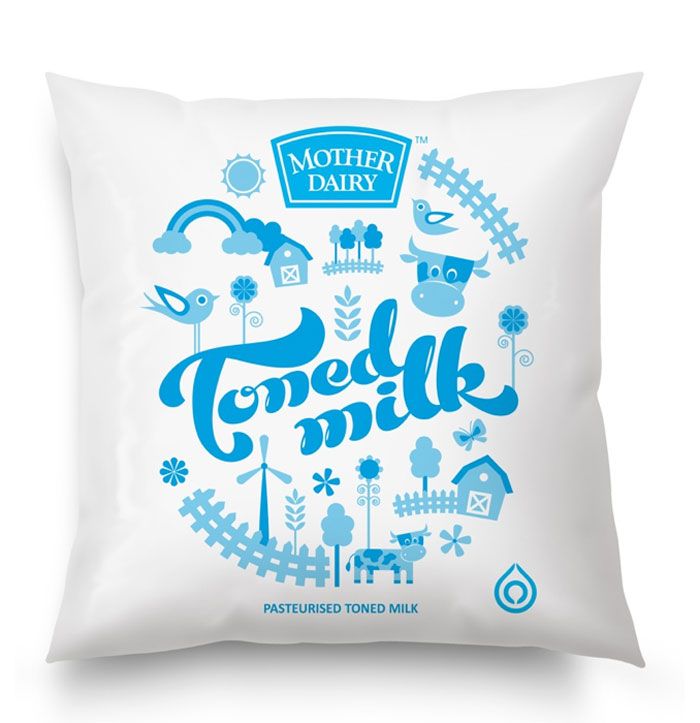 - Martin S.R. et al., Review of Infant Feeding Issues: Key Features of Breast Milk and Infant Formula. Nutrients. 2016;8(5):279.
- Martin S.R. et al., Review of Infant Feeding Issues: Key Features of Breast Milk and Infant Formula. Nutrients. 2016;8(5):279.
16 Montagne P et al. Changes in lactoferrin and lysozyme levels in human milk during the first twelve weeks of lactation. InBioactive components of human milk 2001 (pp. 241-247). Springer, Boston, MA. - Montagne, P. et al. "Changes in lactoferrin and lysozyme levels in breast milk during the first twelve weeks of lactation". In the collection "Biologically active components of breast milk" 2001 (pp. 241-247). Springer, Boston, Massachusetts.
17 Kent JC, et al. Volume and frequency of breastfeedings and fat content of breast milk throughout the day. Pediatrics. 2006;117(3): e 387-395. - Kent J.S. et al., "Amount and frequency of feedings and fat content of milk during the day". Pediatrix (Pediatrics). 2006;117(3):e387-395.
18 Kuo AA et al. Introduction of solid food to young infants. Matern child health J. 2011;15(8):1185-1194.- Kuo A.A. and co-authors. Complementary feeding. Matern child health (Maternal and child health). 2011;15(8):1185-1194.
Introduction of solid food to young infants. Matern child health J. 2011;15(8):1185-1194.- Kuo A.A. and co-authors. Complementary feeding. Matern child health (Maternal and child health). 2011;15(8):1185-1194.
19 Dewey KG Breast milk volume and composition during late lactation (7-20 months). J Pediatr Gastroenterol Nutr . 1984;3(5):713-720. — Dewey C.G. et al., "Amount and composition of breast milk in late lactation (7-20 months)". F Pediatrician Gastroenterol Nutr. 1984;3(5):713-720.
9 amazing properties of breast milk
Many people know or guess about the benefits of breast milk. However, specialists do not stop discovering more and more of its valuable properties.
During the day, breast milk is one, at night it is different
The composition of milk changes constantly - depending on the age of the baby, on the time of day, even on the way the baby was born (natural childbirth or caesarean section).
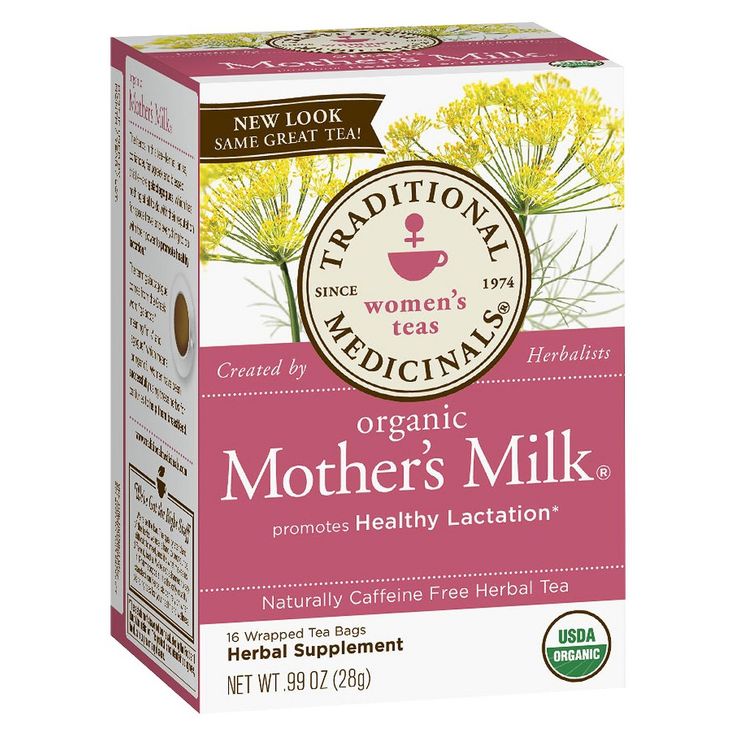 All this is programmed by nature to best meet the needs of the child at a given time or period of life.
All this is programmed by nature to best meet the needs of the child at a given time or period of life. Milk is richer and more nutritious at night, and lighter during the day. Milk contains more water in summer than in winter. If the baby was born prematurely, then his mother's milk is already adapted to feed such a vulnerable baby.
As the baby grows, the composition of milk changes dramatically. It is assumed that this has a positive effect on the immunity of the child.
Good for a baby, but not for an adult
A baby can induce a rush of milk on his own by irritating the nipple with his tongue. And if he is hungry, he sucks quickly and, therefore, milk arrives faster. And it’s not in vain that he tries so hard: for a child, mother’s milk always has an unusually lot of useful things: antibodies, iron, calcium, vitamins, etc., regardless of how many months he has been feeding - 1 month or 1 year.
But for adults, breast milk is practically useless - their gastrointestinal tract can no longer process it, so the now fashionable experiments with baking muffins from women's milk are absolutely groundless.

Mom doesn't need to eat something special to make milk healthier
We often wonder how our grandparents raised their children during the war. So, high-quality milk is produced by a nursing woman, regardless of how well she eats, in what conditions she lives, moreover, even an extremely limited mother's menu does not prevent her from breastfeeding a baby.
And mothers don't have to think about what to eat, so that, for example, milk is saturated with calcium. As soon as it is time for teeth to erupt, the milk magically enriches itself with the necessary element. And when the baby begins to intensively explore the world and needs protein to ensure the desired level of physical activity, then it will certainly appear in milk.
Magic food — colostrum the baby's stomach is tiny (volume is about 7 ml), it is enough for him to saturate and immunize the body with 2 ml of this liquid. In colostrum there are many certain types of hormones, bacteria and antibodies, this is something like the first vaccination, which protects the child, including from allergies, populates the gastrointestinal tract with the necessary microflora.
 Interestingly, the composition of colostrum changes during the three days it is produced.
Interestingly, the composition of colostrum changes during the three days it is produced. In addition, colostrum is noticeably thicker than milk, and it flows extremely slowly, so that the “inexperienced” baby in feeding matters has time to get enough. When the baby has mastered the rhythm of sucking, the colostrum will already have time to be replaced by milk that flows faster.
Has a sweet taste for a short time
So, when the baby eats colostrum for three days, breast milk becomes less thick, lighter, produced in greater quantities and, most importantly, changes composition again. It has more sugars and fats and less protein. After all, the baby is not yet so active and he does not need proteins so much, an overabundance is even harmful.
But it is necessary to quickly adapt to the outside world and grow up a little. The amount of carbohydrates and fats in the composition of this type of milk, which is sometimes called "transitional", provides it.

Two weeks after childbirth turns into a complete nutrition
Two weeks after childbirth, milk changes - and again not only in appearance (even more liquid and lighter), but also in composition. There are already fewer fats in it (about 4%), but they are different in shape - part of the saturated type and part of the polyunsaturated type. They are involved in the development of the nervous system and give the body energy.
The baby eats absolutely complete food, which contains everything he needs - proteins, carbohydrates, vitamins, microelements.
Milk is produced around the clock
The mammary glands consist of a special glandular tissue in which there are many channels - it is literally penetrated by them. On their walls are special cells that produce milk during lactation. And they do it around the clock, without interruption. Milk is produced under the influence of hormones and reflexes.

During pregnancy, certain hormonal changes begin, as a result of which the mammary gland is prepared for the production of breast milk and at the same time increases in size.
When a baby is born, the hormones progesterone and estrogen begin to be produced in smaller quantities, but the amount of prolactin, which stimulates milk production, increases. Thyroid hormones, which are responsible for producing additional energy necessary for the secretion of milk, do not remain without work.
Oxytocin causes milk flushes
Reflexes work while the baby is suckling, as a result of which the hormone oxytocin is produced, which stimulates the formation and flow of milk into the breast in the right amount. The woman at this moment feels a kind of tingling in her chest, and then feels the milk flowing. This is also called "tides".
By the way, oxytocin is precisely the cause of pain in the uterus during feeding, which is felt by a woman who has recently given birth.













